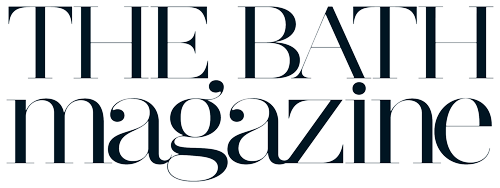The mission of Bristol + Bath Creative R+D has been to bring together creative networks in Bristol and Bath to forge connections, share knowledge, create opportunities and drive innovation. As the project nears its conclusion, Emma Clegg asks its director Jon Dovey what has been achieved…
Bristol + Bath Creative R+D is a £6.8 million collaboration designed to raise the bar for the region’s creative industries. With funding from the Arts and Humanities Research Council (AHRC), the five-year programme, running from 2018–2023, has aimed to forge connections and partnerships in Bristol and Bath, sharing knowledge, creating crossovers and even greater opportunities in what’s already one of the most vibrant clusters in the UK.
The cluster incorporates Bath and North East Somerset, Bristol and South Gloucestershire, an area represented by the West of England Combined Authority (WECA). The size of the creative industries sector in this region is significant – including 7000 business and 50,000 people in work – making around £2 billion for the regional economy, and it is one of WECA’s key economic development areas.
Jon Dovey, Director of Bristol + Bath Creative R+D and Professor of Screen Media at UWE Bristol, breaks this down: “Creative industries are full of small companies dotted all over the place, many with as few as 4–12 people. They don’t have the visibility that more traditional industries have, so we wanted to aggregate those companies, and give them a network for working together.”
This collaboration between UWE Bristol, Bath Spa University, the University of Bath and the University of Bristol and digital creativity centre Watershed is the first-ever involving all four universities within the two cities. “The project began with three questions: how best to ensure inclusion and diversity, what were the future technologies that would make a difference, and what are the new ways to reach audiences in the future,” explains Jon. The next stage was to ask new businesses about the things they were working on that would benefit from research.”
Jon says that academic research is much more connected than it used to be: “Over the last 10 years we’ve been led towards a different kind of research where we work with partners all the time. Our region is already recognised outside London as an important national centre for this kind of work, which universities can support. This money and this R&D (research and development) project allows us to create a little experimental corner of that landscape.”
Bristol + Bath Creative R+D: how it worked
The project focused on five Pathfinders, representing blocks of R&D investment. Jon says, “Each one linked to a particular type of creative industry, and each had a group of people – from industry partners to academics – who we funded to go away and think, talk, research and come up with new ideas. And we used that to put out a call for prototype projects.”
Once funding was agreed with a company, a producer was assigned and they would work with the teams, acting as a sounding board, chasing the process, being an inspiration and a connector. “We want this money to be the start of this journey, not the end of it. We want to support the companies to develop their market offer, get further investment, and achieve the greatest success,” says Jon.
Achieving inclusivity was crucial, because creative and technology industries aren’t known for their social diversity. “If you look at where the creative industries and creative technologies meet – degree level education, usually white, often male – it’s very prescriptive. We ran a project called Creative Workforce of the Future where we got money from WECA and gave placements to people from different kinds of backgrounds.
“We learnt that offering, say, £50K to a company was quite a lot of money for a new start-up, so we started the Trailblazer Fund, which focused on awards of between £5K and 10K. This allowed us to make lots of smaller investments, to respond to different kinds of people less established in the industry, and to spread our resources more widely.”
Another Pathfinder, Here and There, aimed to find new ways of creative set-ups working internationally. “Immersive theatre company Raucous is a great example of that,” says Jon. “They partnered with a Canadian company and came up with a story about a women whaler who lives in a lighthouse in the middle of the Atlantic. It’s regional, but it’s also global because it’s about whales and ecology. We need to have the confidence to know that we don’t have to connect internationally via London. We can go from local to global.”
Bath and Bristol: an effective collaboration
I ask Jon how the respective projects have fitted within Bath and Bristol. “The commissioned work has reflected the characteristics of each city. The level of connectivity between the creative industries and universities in Bristol was already quite well-developed, but at the same time Bath has particular strengths that fitted well with many of our projects and the two cities have amazing complementary offerings. The Pathfinder on Amplified Publishing, which considered all the ways content is being produced, was very much driven by the Bath community because the publishing industry has a strong history there.
“Then there is Bath CAMERA, a long-established specialist lab that was developing the technology for motion capture from the beginning.
As virtual production and animation have become bigger parts of the moving image profession, their research areas have boomed. It’s been great to work across all those partners and see how the whole adds up to more than the parts in all those collaborations.
“Bath Spa University now has The Studio at Palace Yard Mews, a studio for artists and creatives to do R&D and meet one another. That has been really important for Bath because the university teams can interface with the creative teams in the city. Bath Spa University are now thinking about how the arts school, particularly the Locksbrook campus, relates to the rest of the city. That’s partly come about because they think of the university as a partnership as well as a teaching institution.”
Bath and Bristol are two very different cities united by a combined authority, but it’s crucial for them to work together. “WECA and their strategic role in the development of the region means we need more of a combined offer between the two cities because that is one of our routes into government, routes into policy,” says Jon.
Looking ahead, Jon is optimistic: “We have an inventive, innovative creative environment and that will carry on manifesting itself as young people come out of the creative education system. I hope that with support and with bringing in new people all the time we can keep that going. The involvement of the universities, the city and WECA with the creative industries isn’t going to stop. I’m confident that the future development of the creative industries in our region is going to be very strong and will continue to grow. This is an exciting area that has a lot of potential, and the partners want to continue working together.”

PARTNERSHIP PROFILE 1
Based at the University of Bath, Bath CAMERA is a world-leading computer science research centre, innovating with visual technology, motion capture, biomechanics, machine learning, AI and more, and assisting Creative Industry and Sports and Health with R&D in these areas.
During Bristol + Bath Creative R+D, CAMERA has collaborated with many regionally based creatives and creative organisations, helping them solve technological or computational challenges when making 3D or Extended Reality (XR) content for audiences. Examples include realising 3D photo-realistic speaker stacks for Crack Magazine’s Everything is Music app, conveying the spirit of St Paul’s Carnival through Augmented Reality and generating controllable personalised avatars so performers at Lost Horizon could engage with virtual audiences at the same time as they perform to audiences live at the venue.
In Bath, CAMERA is collaborating with The Egg on a 3D model of their theatre space and conducting R+D so cast and crew can meet in the model remotely via VR headsets. Interacting with each other in a fully immersive and first-person way grants the option to rehearse and make decisions about set-building, actor positioning and all before money has been spent on company members travelling across the country to do so in person.
This sort of innovation could revolutionise the approach theatre makers take to traditional touring theatre or stand-alone productions, by not only making the production processes more affordable but reducing the carbon footprint of their corner of the sector | camera.ac.uk

PARTNERSHIP PROFILE 2
Little Lost Robot CIC makes immersive digital and installation artwork about otherness, wellness and inclusivity. It uses its work to demystify creative technology, co-creating artwork with communities with the aim of bringing visibility to the contemporary pressures on standards of living and reimagining more humane futures for public spaces.
They received funding to help them to begin hosting ‘In The Meanwhile’ spaces, bringing immersive, interactive digital artwork to empty shop units in central Bath. This provided deeply valuable interaction with public audiences and elicited awe and wonder from visitors. Phase Two of In The Meanwhile offered artist residencies working alongside Little Lost Robot to develop technological creative practices, incubation to rebuild confidence in making and teaching art in an unpressured environment, and free workshops open to the public. This culminated in a makers’ market and a trail of light-based artworks, illuminating empty windows.
Targeted support from Bristol + Bath Creative R+D helped Little Lost Robot to develop and test its business model and develop in-depth knowledge about the ins and outs of hosting meanwhile spaces and the relevant legalities.
Now you can find them hosting a creative space on Twerton High Street every Tuesday to Friday, occupying a pair of empty shops for free drop-in activities, providing free lunch and refreshments, chats and good company, plus a play area for preschoolers. Find out more or get involved by visiting: lostrobot.org; instagram.com/studiolostrobot; facebook.com/studiolostrobot
PARTNERSHIP PROFILE 3
City Global Futures is a small, independent research consultancy that focuses on smart, sustainable and inclusive futures. The business is deeply rooted in the West of England with a presence in both Bath and Bristol. However, many of the issues and opportunities it works on with clients are globally relevant. This was certainly the case with the Connecting Bath research report (2021), which focused on the importance and value of high speed digital connectivity to the city.

The research highlights that cutting edge, private digital networks are seen as essential to the city’s future connectivity mix. However, so is improving Bath’s current, ‘everyday connectivity’, which is seen as falling short of where it should be.
The report welcomes the current roll out of ‘Gigabit Fibre’ and identifies five different ways in which cutting edge connectivity might bring value to Bath. These are, a Market-led Approach; a Smart City Approach: a Venue-led Approach; an R&D Testbed and Digital Neighbourhoods. In conclusion, the report suggests that the real power is in adopting not one approach but all of them with the aim of building a strong, interconnected creative digital ecosystem.
Bath and North East Somerset Council has actively responded to the issues raised through the research, creating a cross-sector Connectivity working group to support the newly formed Future Ambition Board.
For the City Global Futures the research provided a valuable springboard into new areas, such as the future of transport and mobility and re-imagining a ‘post growth’ economy | cityglobalfutures.com
Featured image: Lost Horizon | Photography by Jon Aitken


